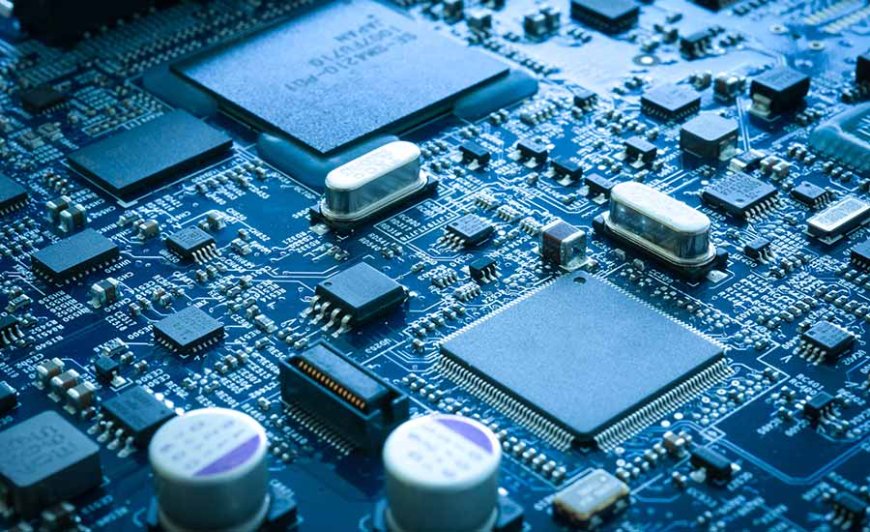India-Made Semiconductor Chips by 2025 End: A Game-Changer for Technology and Economy
PM Modi announces India’s mission to produce semiconductor chips domestically by 2025-end, boosting tech self-reliance and manufacturing power.

Introduction
On India’s 79th Independence Day, Prime Minister Narendra Modi made a landmark announcement — India will produce its own semiconductor chips by the end of 2025. This ambitious project is part of a “mission mode” initiative to make India self-reliant in one of the most critical sectors of modern technology. Semiconductors are the lifeblood of electronics, powering everything from smartphones and cars to satellites and medical devices. The move signals India’s determination to become a global hub for high-tech manufacturing.
History & Background
Globally, semiconductor manufacturing has been dominated by a few countries such as Taiwan, South Korea, and the USA. India, despite being a major IT powerhouse, has long relied on imports to meet its semiconductor demand. The COVID-19 pandemic and geopolitical tensions exposed vulnerabilities in global chip supply chains, causing massive shortages. These disruptions pushed India to take decisive steps toward building its own semiconductor ecosystem, backed by the “Semicon India Programme” launched in 2021 with incentives worth billions.
What Are Semiconductors?
Semiconductors are materials, usually silicon-based, with electrical conductivity between conductors (like metals) and insulators (like glass). They are the foundation of microchips that control computing, communication, and control functions in modern devices. Without them, advanced technology simply cannot function.
PM Modi’s Mission Mode Announcement
The plan involves setting up state-of-the-art fabrication plants (fabs) in India, collaborating with global tech leaders, and training a skilled workforce. The government aims to roll out the first batch of India-made semiconductor chips by late 2025. This mission is not just about manufacturing chips—it’s about building a complete ecosystem, including design, testing, and packaging capabilities.
Reasons Behind the Push
-
National Security – Reducing dependency on foreign suppliers for critical technology.
-
Economic Growth – Strengthening the manufacturing sector and attracting foreign investment.
-
Job Creation – Generating thousands of high-skill jobs in engineering, R&D, and manufacturing.
-
Technological Independence – Enabling India to compete in the global digital economy.
Current Updates
As of August 2025, multiple semiconductor fabs are under construction in Gujarat, Karnataka, and Tamil Nadu. Partnerships with global giants like TSMC and Intel are in advanced stages, and the government is fast-tracking environmental and operational clearances.
Future Benefits
-
Boost to ‘Make in India’ – Strengthening India’s image as a tech manufacturing hub.
-
Lower Costs for Electronics – Domestic production could make smartphones, EVs, and gadgets more affordable.
-
Export Potential – India could emerge as a chip supplier to global markets.
-
Innovation Boost – Encouraging R&D and start-ups in chip design and AI hardware.
Key Points
-
Chips expected by 2025-end.
-
Mission mode execution under PM Modi’s leadership.
-
Strong government and private sector collaboration.
-
Target: Global competitiveness in semiconductor manufacturing.
Positives
-
Reduces import dependence.
-
Enhances national security.
-
Creates high-value jobs.
-
Positions India in the global supply chain.
Negatives / Challenges
-
Extremely high initial investment costs.
-
Need for skilled manpower and technology transfer.
-
Intense competition from established players like Taiwan and China.
-
Risk of delays due to infrastructure or regulatory hurdles.
Significance
The success of this mission will decide India’s role in the global tech race. Semiconductors are not just another industry; they are a strategic asset influencing everything from economic growth to defense capabilities.
Final Thoughts & Conclusion
India’s plan to produce its own semiconductor chips by 2025 is a bold and visionary move that can transform the nation’s technological landscape. While the road ahead is challenging, the potential rewards—economic self-reliance, job creation, and a stronger global standing—are immense. If executed successfully, this could mark the beginning of a new era where India is not just a consumer but a producer and innovator in the most critical technology of the 21st century.

 Ellofacts
Ellofacts 





